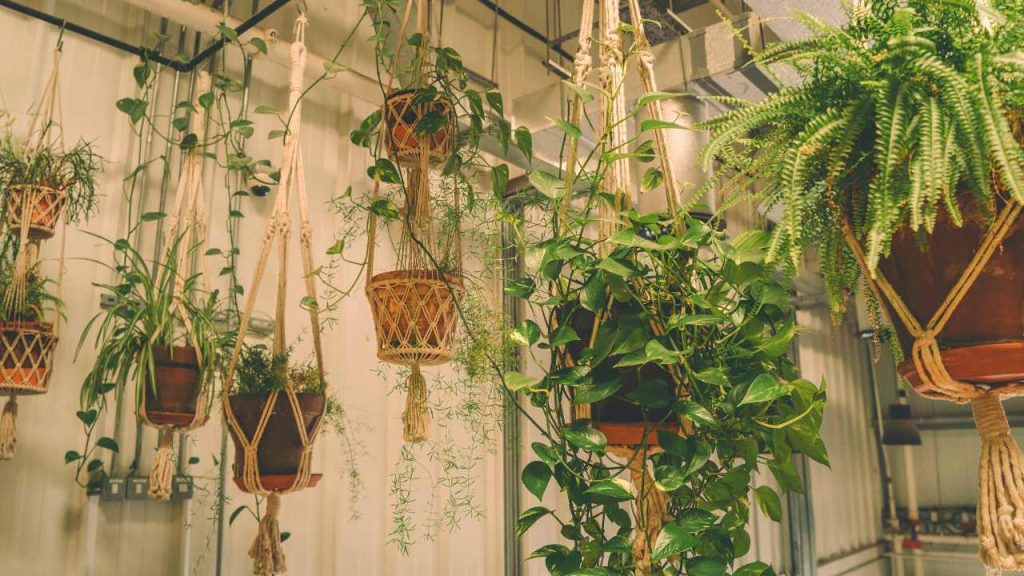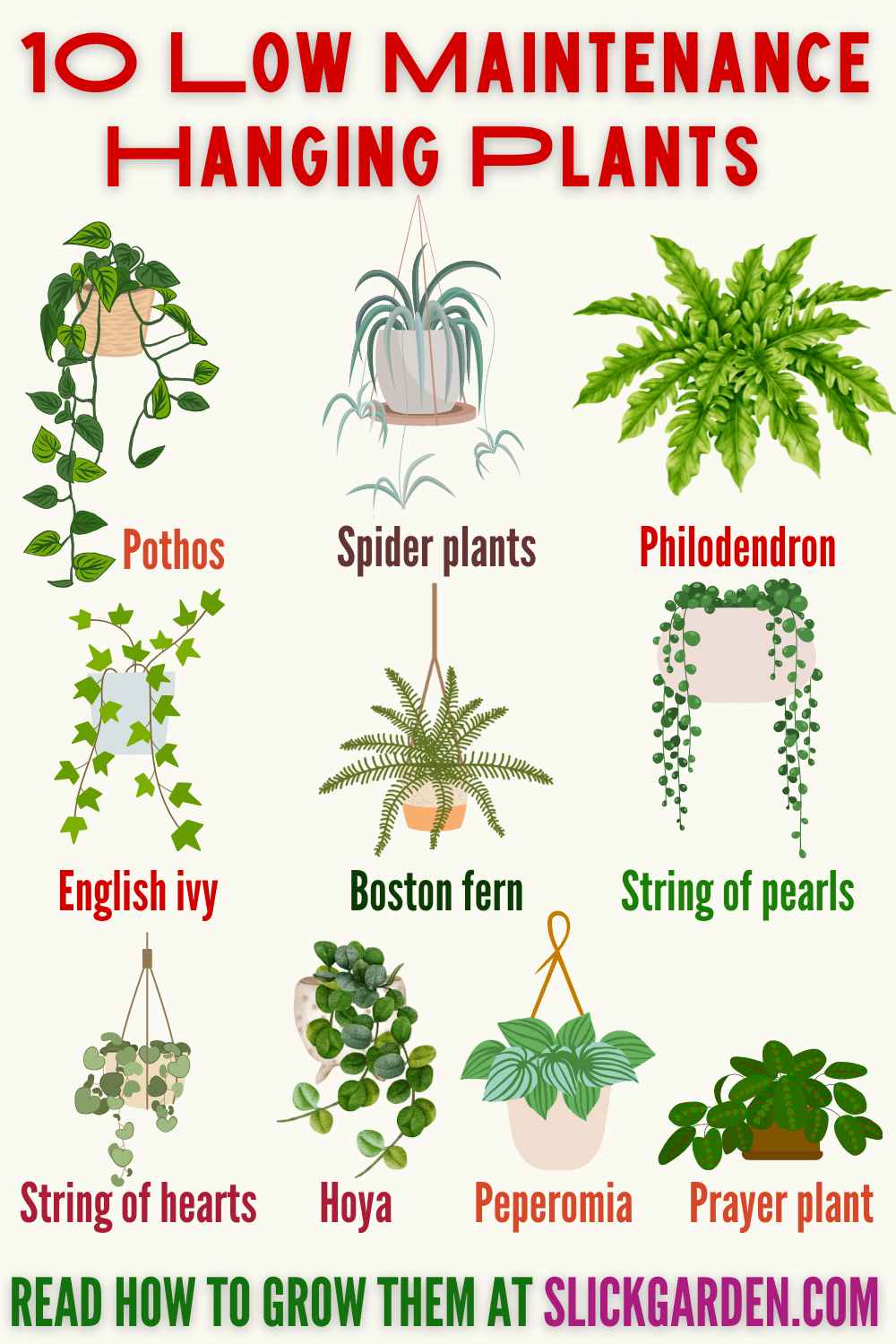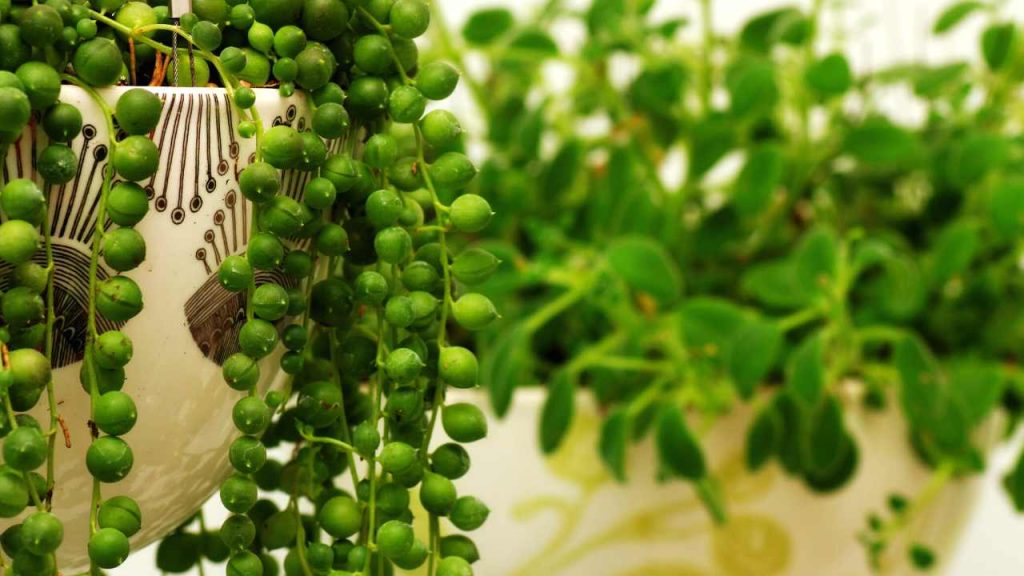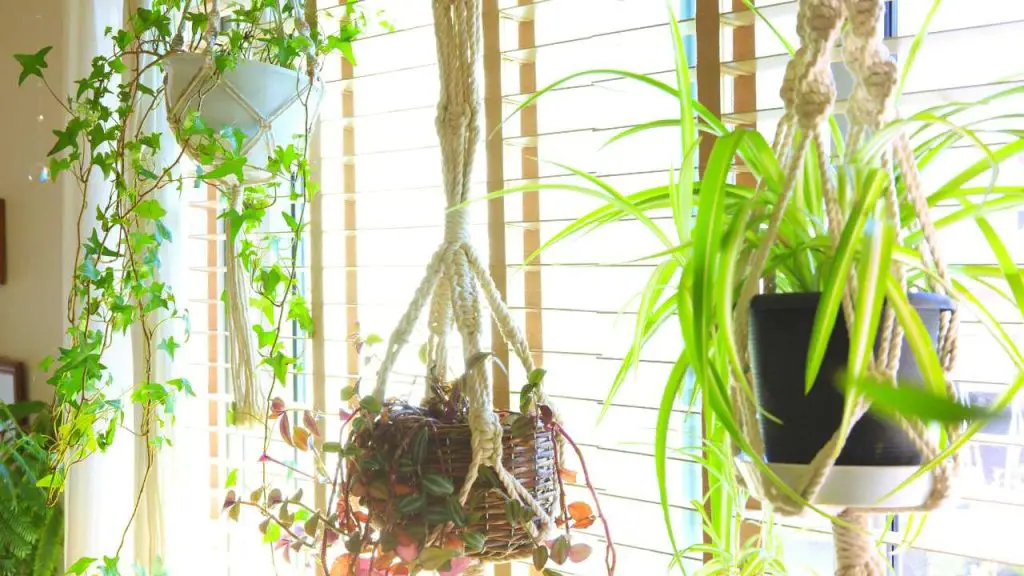When involved in the passion of gardening, people go for many plants. They even go for their passion even if they don’t have the space. That’s why they always look for this kind of alternative to space. That’s why we are going to discuss planting low-maintenance hanging pants.

These plants are true blessings of nature. These are revealed by the nature to ensure that no one is being left to fulfill their dream and passion for gardening. It is because everyone can afford them, and can take good care of them in a limited space.
Why Plant Low Maintenance Hanging Plants?
There are several reasons why you might want to plant low-maintenance hanging plants. Some of the important ones are as follows;
- The convenience of hanging pants
Hanging plants are easy to take care of because they don’t require as much attention as plants that are planted in the ground. They can be placed in a spot that is convenient for you to water and care for them, such as on a balcony or near a window.
- Space saved
Hanging plants can be a great way to add greenery to your home without taking up valuable floor space. This can be especially useful if you have a small living space or if you want to add plants to a room without making it feel cluttered.
- Increased aesthetics of the home
Hanging plants can be very decorative and can add a touch of greenery and natural beauty to any room. They can be hung from the ceiling, a wall, or a shelf, and they come in a wide variety of shapes, sizes, and colors. In this way, you will be able to add natural greenery to the home.
- Air purification in the home
Some hanging plants, such as spider plants and pothos, are known to be effective at purifying the air by removing toxins and pollutants. This can be especially beneficial if you live in an urban area or if you spend a lot of time indoors. This gives you an extra to plant low-maintenance hanging plants.
Overall, low-maintenance hanging plants can be a great addition to your home because they are convenient, space-saving, decorative, and can help purify the air.
How To Plant Low Maintenance Hanging Plants?
Here are some general prerequisites for planting low-maintenance hanging plants. Once you have followed these steps you are good to go as these are low-maintenance plants.

- Select the right plant
Look for plants that are native to your region or that are known to be hardy and low maintenance. Some good options include trailing plants like ivy, pothos, and philodendron, or flowering plants like bromeliads and begonias.
- Selection of the right location
Hanging plants typically do best in bright, indirect light, so choose a location that gets plenty of natural light but is not in direct sun. Avoid placing hanging plants in drafty or excessively humid locations.
- Selection of potting soil
Most hanging plants prefer a well-draining soil mix that contains a combination of potting soil, peat moss, and perlite or vermiculite. Avoid using soil from your garden, as it may not drain well enough for container plants.
- Good watering schedule
Overwatering is a common problem with hanging plants, so it’s important to let the soil dry out slightly between watering. Use a watering can or a watering wand with a fine nozzle to gently water the plant, taking care not to get the foliage too wet.
- Adding appropriate fertilizers
Hanging plants generally don’t need a lot of fertilization, especially if they are grown in a well-draining soil mix. If you do decide to fertilize your plant, use a balanced, water-soluble fertilizer and follow the instructions on the package for the appropriate dosage.
Keep Reading:
Low Maintenance Hanging Plants

Here we will discuss ten types of low-maintenance hanging plants and some tips on how to grow them so that you can decide easily.
- Pothos Plants
Pothos also known as Epipremnum aureum is a fast-growing, easy-to-care-for plant that is native to the Solomon Islands. It has heart-shaped leaves that come in a range of colors, including green, yellow, and variegated. To grow pothos, place it in a spot with bright, indirect light and water it when the upper layer of the soil feels dry to the touch.
- Spider plants
Spider plants also known as Chlorophytum comosum are popular for their ability to purify the air and their ability to produce baby plants on long, thin stems. To grow spider plants, place them in a spot with bright, indirect light and water them once a week or so.
- Philodendron Plants
Philodendrons are a large group of tropical plants that are known for their attractive, heart-shaped leaves. They are easy to care for and will thrive in a spot with bright, indirect light. Water them when there is a need, but don’t overwater them.
- English ivy Plants
English ivy is a fast-growing, low-maintenance plant that is native to Europe and Asia. It has small, glossy leaves and can be trained to grow up a trellis or other support. To grow English ivy, place it in a spot with bright, indirect light and water it when the upper layer of the soil is dry.
- Boston fern Plants
Boston ferns are popular for their lush, feathery fronds and their ability to purify the air. To grow Boston ferns, place them in a spot with bright, indirect light with less intensity and water them regularly to keep the soil evenly moist.
- A string of pearls Plants
A string of pearls is a low-maintenance plant with small, spherical leaves that resemble pearls. It is native to South Africa and grows best in bright, indirect light but not so full. Water when the layer of the soil by checking it with a finger or any instrument.
- A string of hearts Plants
The string of hearts is a trailing plant with heart-shaped leaves that is native to South Africa. It grows best in bright, indirect light and should be watered when there is a need. Avoid over-watering so that no diseases are there.
- Hoya hanging plants
Hoya is a large group of tropical plants that are known for their waxy, fragrant flowers. They are low-maintenance plants that grow the best indirect light and bright and should be watered evenly to keep up with the moisture rather than watering again and again.
- Peperomia hanging plants
Peperomia is a large group of tropical plants that are known for their small, succulent-like leaves. They are low-maintenance plants that grow best in the indirect bright light of lower intensity and should be watered when the soil feels dry to the touch.
- Prayer plant
Prayer plants also known as Maranta leuconeura are named for the way their leaves fold up at night, as if in prayer. They are low-maintenance plants that grow best in bright, indirect light and should be watered when the soil feels dry to the touch.
Keep Reading:
- Houseplants You Can Easily Propagate From Cuttings
- How To Use Grow Lights For Houseplants To Help Them Thrive
- How To Make Houseplants Grow Faster?
Taking Care Of Low-Maintenance Hanging Plants

To take care of low-maintenance hanging plants, there are a few basic things you can do. These are known for their less care that’s why these are called low maintenance. You just need to follow some basics and you are good to go.
Water them regularly
Most hanging plants need to be watered once a week or so, depending on the humidity and temperature of your home. Water them until the soil is evenly moist, but be sure not to over-water, as this can cause the roots to rot.
Provide them with sunlight
Most hanging plants need indirect sunlight to thrive. Place them in a spot where they will receive bright, indirect light, but avoid direct sunlight, which can scorch the leaves. Light is important but excess sunlight can be dangerous for plants.
Fertilize them occasionally
Hanging plants generally don’t need to be fertilized very often, but you can give them a boost by using a balanced liquid fertilizer every few weeks during the growing season. Because they thrive in good soil, which you would have adopted before the plantation of plants.
Pruning of hanging plants
If your hanging plants start to get leggy or overgrown, you can trim off the excess growth to keep them looking neat. It will grow the resistance to diseases as well.
Protection from the pests
Keep an eye out for pests, such as aphids and spider mites, which can damage your hanging plants. If you notice any pests, use a natural pest control method, such as neem oil or a homemade pest repellent, to get rid of them.
In a nutshell, the low-maintenance hanging plant can be planted easily. You just need to make sure that all the prerequisites are met. It is because if the start will be good, the growth of the plants will be good. Also, these plants will be a great addition to the home for decoration, etc.
Moreover, it is not only for the people who don’t have space. Everyone can g for these as they are easy to maintain and grow.
